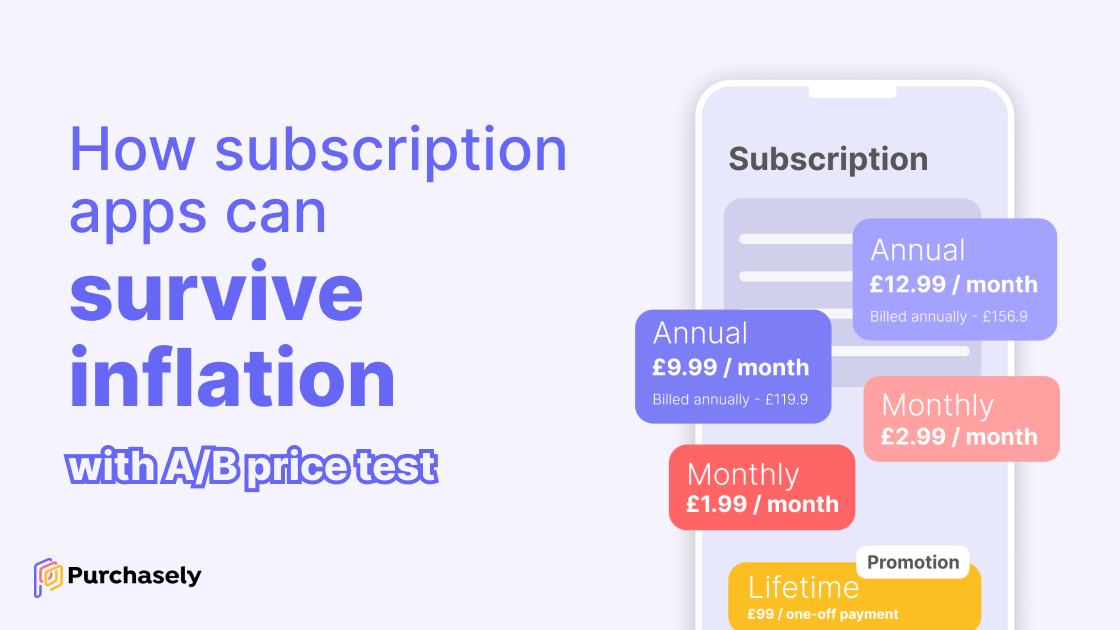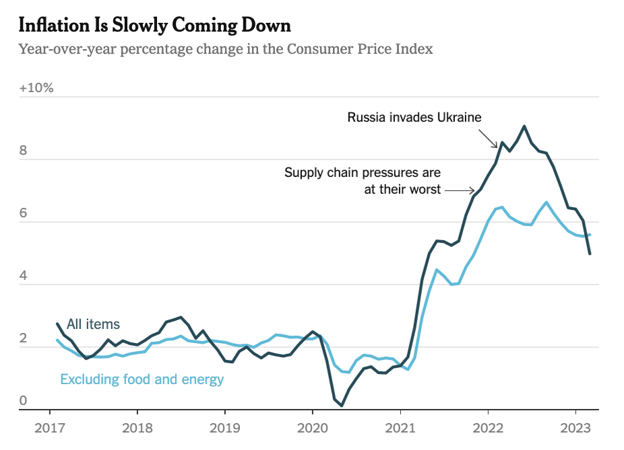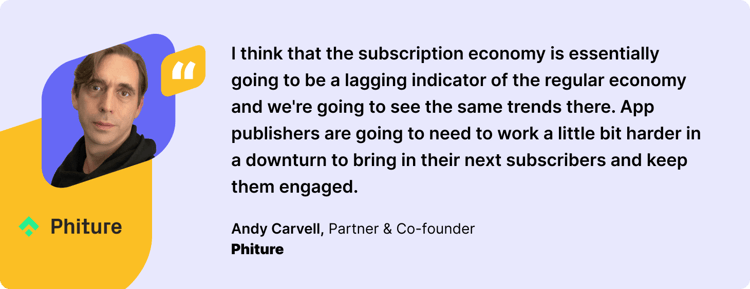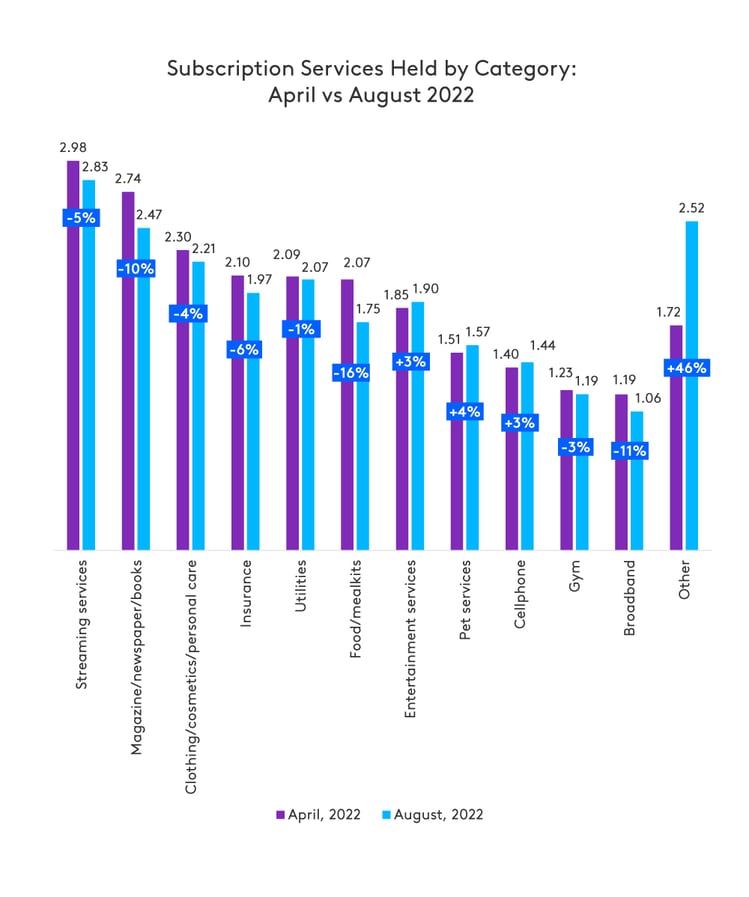Advanced Segmentation to Increase LTV
13 March 2025
Customers Case Study Paywall A/B Testing Conversion Price Testing Mobile APPBoost LTV with advanced segmentation. See how top apps tailor pricing & messaging to drive conversions.
Get our latest resource
8 app onboarding flows defining 2026
We analyzed 8 top-performing apps — TikTok, Wise, Nike, Expedia, Fitbit, Strava, Pinterest, and Flo — to uncover the patterns shaping 2026’s best onboarding experiences.
This playbook reveals the patterns shaping next-gen onboarding — what works, why it works, and how you can apply it to your own experience.

Bomee Lafitte
Content Marketing Manager @ Purchasely
In recent years, the economic landscape has been a wild ride and not in the most enjoyable way. In 2022 the world inflation rate reached 9.1%, the sharpest spike since 1982, shaking up the global financial scene. 2023 came in with a glimmer of hope, with a 6.52% inflation rate. But prices across all goods and services haven’t actually gone down, and the frustration lingers for many of us, both consumers and businesses when it comes to settling our bills.

Sources: Bureau of Labor Statistics; New York Fed’s Global Supply Chain Pressure Index By The New York Times
This is where things get even more personal for many of us: The impact of economic instability has made its way into the mobile app industry as well.
An increasing number of app publishers and marketers are finding themselves confronted with mounting operational costs, including expenditures for software tools, employee wages, office space, and other essential resources. Adding complexity to the situation, consumers are becoming more prudent than ever about their spending habits on apps, actively seeking opportunities to trade down, save, or purchase fewer non-essential items.
Back in September 2022, during our podcast chat, Andy Carvell, Partner and Co-founder of a top mobile growth consultancy, shared a spot-on prediction. He said, the subscription economy will be a lagging indicator of the general economic downturn, and the first signs to watch out for will be the impact on monthly subscriptions.
Listen to the conversation with Andy: How to optimize mobile app subscription with Andy Carvell (Phiture)

If you're an app publisher who can relate to these struggles and is determined to find the ideal pricing strategy to make your app stand out and remain appealing in these challenging times, continue reading to explore:
Over the past few years, inflation has significantly impacted nearly everyone and everywhere, prompting a growing number of consumers to adjust their spending habits to varying degrees.
While still engaged in spending, consumers have become generally more value-conscious, actively seeking ways to save money in response to inflationary pressures.
Here are a few study findings gathered between 2022 and 2023 that illustrate the changing consumer behavior.
50% of consumers are cut back on “extras” (source: Marketingcharts)
42% are likely to buy brands on sale/promotion (source: Ipsos)
Shoppers are prioritizing staples over discretionary goods. (source: JP Morgan)
80% of survey respondents are changing their shopping behavior by trading down, altering the purchase quantity, or switching retailers to find lower costs. (source: McKinsey)
We are also seeing the impact of inflation on consumer habits in the way people subscribe to apps or make in-app purchases. When the cost of living keeps rising, and every penny counts, app users become more cautious about prices and more careful with their in-app spending overall.
Despite an increase in gaming app downloads by 6.7 billion in 2022 compared to the previous year, spending on games decreased by 5% (source: data.ai).
Between April and August 2022, the average number of subscriptions to entertainment services, pet services, and cell phones showed very slight increases. Average subscription levels fell across eight other specific categories. (Source: Kantar)

Subscribers are getting more selective: Between Q1 2022 and Q1 2023, the average number of retail product subscriptions maintained by a subscriber per month has gradually declined from 4.1 to 2.9. (source: PYMNT)
.png?width=750&height=538&name=subscribers%20(2).png)
The staggering inflation rate and the prices of software have been moving hand in hand in the same direction. Opinions on the root cause of the trend vary. Some argue that companies are simply adjusting their prices in response to the soaring costs of materials, labor, and energy, which have escalated due to various global events such as the pandemic and the war in Ukraine. Some skeptics suggest that the upward shift is exacerbated by the attempt to exploit the increased expenses as an excuse to bolster profit margins.
Regardless, the software industry, like many others, has experienced a common trend of price increases. Let's take a look at how major software vendors have responded.
HubSpot: The inbound marketing and sales software raised its prices by 12% as of September 2022, marking the first increase since 2018.
Webflow: The popular mobile landing website building tool jumped its Site plan prices, with increases ranging from $2 to $9 per month based on the plan and billing frequency.
Cloud services: Expenses have also seen a notable surge. Big players like Google Cloud Platform, Microsoft Azure, and Amazon Web Services implemented substantial price hikes in 2022.
Zendesk: In July 2023, the price for Support and Suite packages across different subscription plans increased on average to 16%. For non-Support and Suite SKUs also increased by 20%.
Apple iCloud: Due to changes in foreign currency exchange rates, Apple has hiked the iCloud storage subscription cost in select markets, including the UK, Poland, Romania, South Africa, Sweden, and more.
Microsoft Office Cost: In Early 2022, various Microsoft Office 365 plans introduced price hikes ranging from 8% up to 25%.
There is no doubt that the rising inflation is affecting the costs of nearly everything involved in developing and operating a subscription app business.
Labor costs, for instance, may increase due to higher wages or the need to attract skilled professionals in a competitive market. The rising cost of software tools as mentioned earlier, from cloud services to CRM platforms, and other infrastructure-related expenses may also add pressure on subscription apps.
Following are some other common subscription app development and operation expenses.
Development costs: These include hiring app developers, designers, and testers, as well as expenses related to coding, prototyping, and app infrastructure.
Marketing and user acquisition: Expenses related to paid ads, social media campaigns, app store optimization, and user acquisition strategies to attract and retain subscribers.
Server and infrastructure costs: Expenses for hosting, cloud services, maintenance, and scalability to ensure smooth app performance.
Customer support: Expenses associated with providing timely and efficient customer support, including hiring support staff or outsourcing support services.
Payment processing fees: Transaction fees charged by payment gateways or app stores for processing subscription payments.
App store fees: App stores like Apple's App Store and Google Play Store charge fees for listing and distributing your app.
Analytics and user data: Costs associated with implementing analytics tools and gathering user data for app performance analysis, user behavior tracking, and personalized marketing strategies.
Security and privacy measures: Expenses related to ensuring data security, implementing encryption, and adhering to privacy regulations, such as GDPR or CCPA, to protect user information. Today’s app users are becoming more sensitive to security matters.
Updates and maintenance: Costs for ongoing app updates, bug fixes, compatibility improvements, and feature enhancements based on user feedback and market demands.
Subscription management platforms: Costs associated with using third-party subscription management platforms or payment gateways to handle recurring billing, invoicing, and managing customer subscriptions.
4. From Netflix to Spotify, how subscription services are responding to inflation
While these elements are subject to change under inflationary pressures, the app industry has responded accordingly.
Disney+: Towards the end of last year, Disney+ raised its ad-free monthly subscription from $7.99 to $10.99. However, Disney also introduced an "ad-supported" basic tier priced at $7.99, offering a lower-cost option.
Apple TV+: Apple TV+ raised its monthly subscription from $4.99 to $6.99 and its annual subscription from $50 to $69 in fall 2022.
Apple Music: Apple Music increased its monthly price by $1 for individuals and $2 for families.
Youtube: YouTube Premium Family plan price increased by 28%, with U.S. prices increasing from $17.99 to $22.99.
Territory-specific adjustment: In January 2022, Netflix increased its prices by $1 to $2 per plan, then a year later, the brand cut the subscription fee by 20% to 45% across more than 30 countries as streaming competition continues to ramp up.
Demographic-specific adjustment: While the YouTube Premium Family plan price increased, the YouTube Premium individual plan and the student plan maintained their current prices of $11.99/month and $6.99/month, respectively.
Spotify decided not to raise prices on its U.S. subscription plan, despite the hikes introduced by Apple Music and YouTube Premium — but CEO Daniel Ek hinted an increase could come at some point this year.
The majority of news publishers made reduced their promotional subscription rates. Between June 2022 and June 2023, the average price for the top 100 digital subscription products from new publishers dropped by nearly 50%.
Nonetheless, the average price of an in-app purchase (IAP) in the U.S. on the iOS App Store has increased 40% year-over-year (YoY) in the month of July, 2022. (Source: apptopia)
As discussed above, subscription apps are adopting diverse strategies to navigate the economic terrain.
Some maintain their prices, while others implement increases to offset costs and maximize revenue. Certain apps lower subscription rates to entice and retain users, while others tailor pricing to specific territories, adapting to market dynamics and consumer behaviors.
What's worth noting is that not all apps follow the path of price hikes.
This raises the important question: What's the best price optimization strategy for this challenging situation?
The answer lies in a proven solution: price testing.
Price testing empowers app publishers to gain valuable insights into their own users' preferences, price sensitivity, and market demand. It allows them to refine pricing strategies and discover their unique balance between revenue generation and customer satisfaction.
By embracing price testing rather than adhering to generic price adjustment trends, subscription apps can effectively position themselves competitively and confidently adapt to changing market dynamics.
To ensure successful results from your subscription app's price tests, here are some important price testing guiding principles to keep in mind:
Test duration: Aim for a longer testing period to achieve higher statistical significance. By allowing tests to run for an extended time and gathering a sufficient sample size, you can obtain more reliable and conclusive data that accurately reflect user behavior and preferences.
Isolate the test: Avoid any factors that may influence your test results. It's crucial to run the test separately from other activities, such as major acquisition campaigns, to accurately determine the impact of the price change on conversions and revenue.
Iterative testing: Don't be afraid to retest multiple times until you find the optimal configuration. Analyze the data from each test and use it to inform subsequent iterations. Through continuous testing and adjustment, you can fine-tune your pricing strategy and find the price point that resonates with your target market.
Realistic scenarios: Avoid the temptation to engage in a price war that may compromise your financial sustainability in the competitive landscape. Instead, carefully consider detailed and realistic factors regarding increased operational costs.
Customer impact: Avoid alienating your existing customer base with drastic price changes. Instead, consider strategies like grandfathering or offering incentives during price transitions. Maintaining customer loyalty and mitigating negative sentiment are crucial for long-term success.
Beyond price adjustments: Explore additional tactics beyond simply adjusting the price point. Strategically leverage promotional offers, new packages, or consumables (OTPs) to generate additional revenue streams and increase customer lifetime value.
Utilize the right tool: Simplify and streamline your price testing and monetization efforts using a comprehensive growth platform like Purchasely. With Purchasely, you can seamlessly build, test, and iterate on every element of your app's monetization strategy within a single modern console. Its user-friendly, no-code capabilities enable anyone on your team to contribute to the app's growth and success.
With its advanced features tailored for price testing and paywall iteration without the need for coding, Purchasely empowers you to save valuable time and effort. By harnessing the capabilities of the right tool, you can conduct price tests efficiently and make well-informed, data-driven decisions that optimize your pricing strategy.
13 March 2025
Customers Case Study Paywall A/B Testing Conversion Price Testing Mobile APPBoost LTV with advanced segmentation. See how top apps tailor pricing & messaging to drive conversions.
Jason Gossett
18 July 2023
Paywall A/B Testing App Pricing Price TestingLearn how inflation impacts subscription prices (software, apps, streaming) and learn how the A/B price test helps navigate through the changing...

Bomee Lafitte
Content Marketing Manager @ Purchasely
19 June 2023
Paywall A/B Testing App Pricing Price TestingPrice A/B testing with Purchasely: Why, when, what, and how.

Bomee Lafitte
Content Marketing Manager @ Purchasely